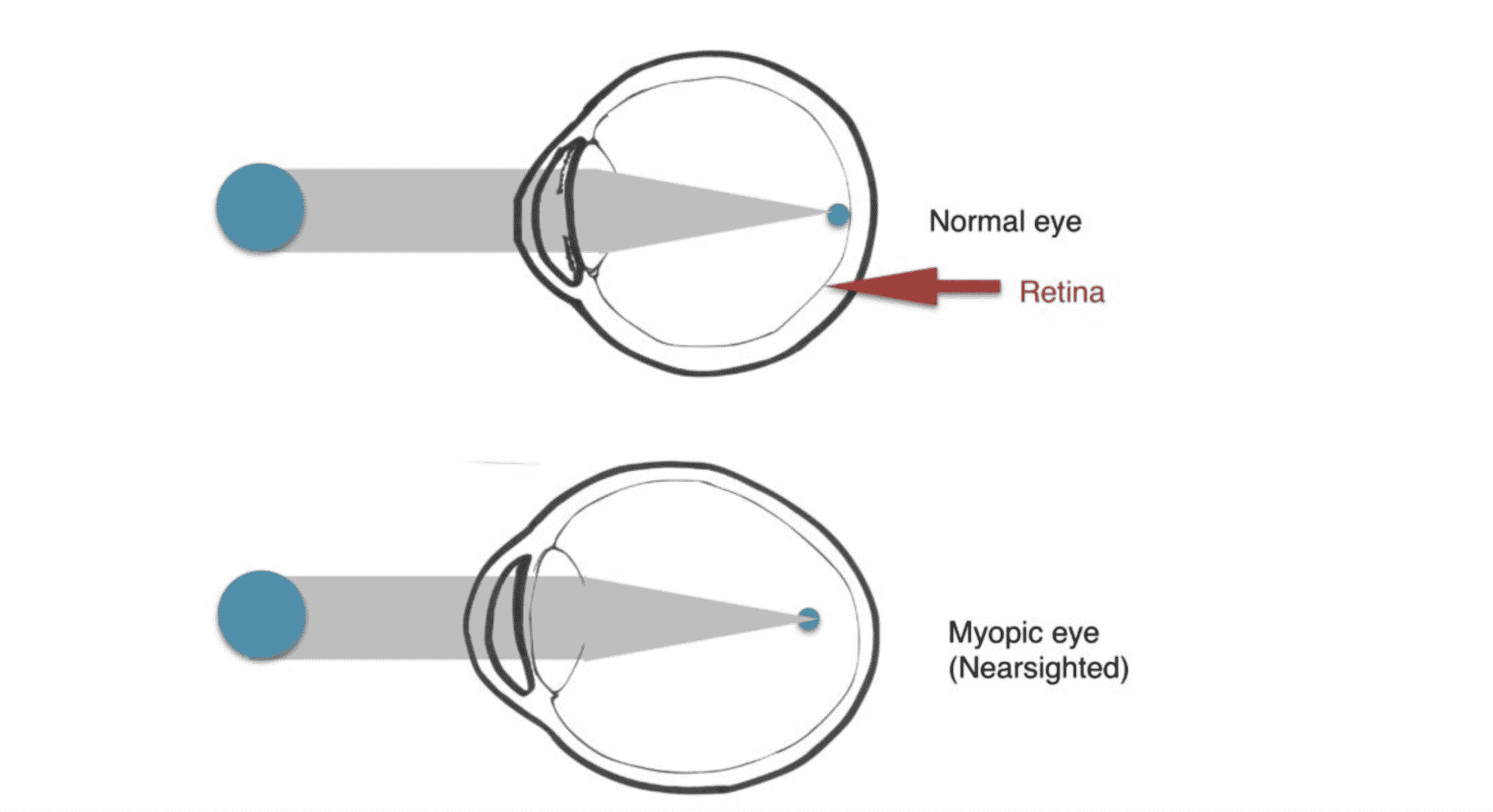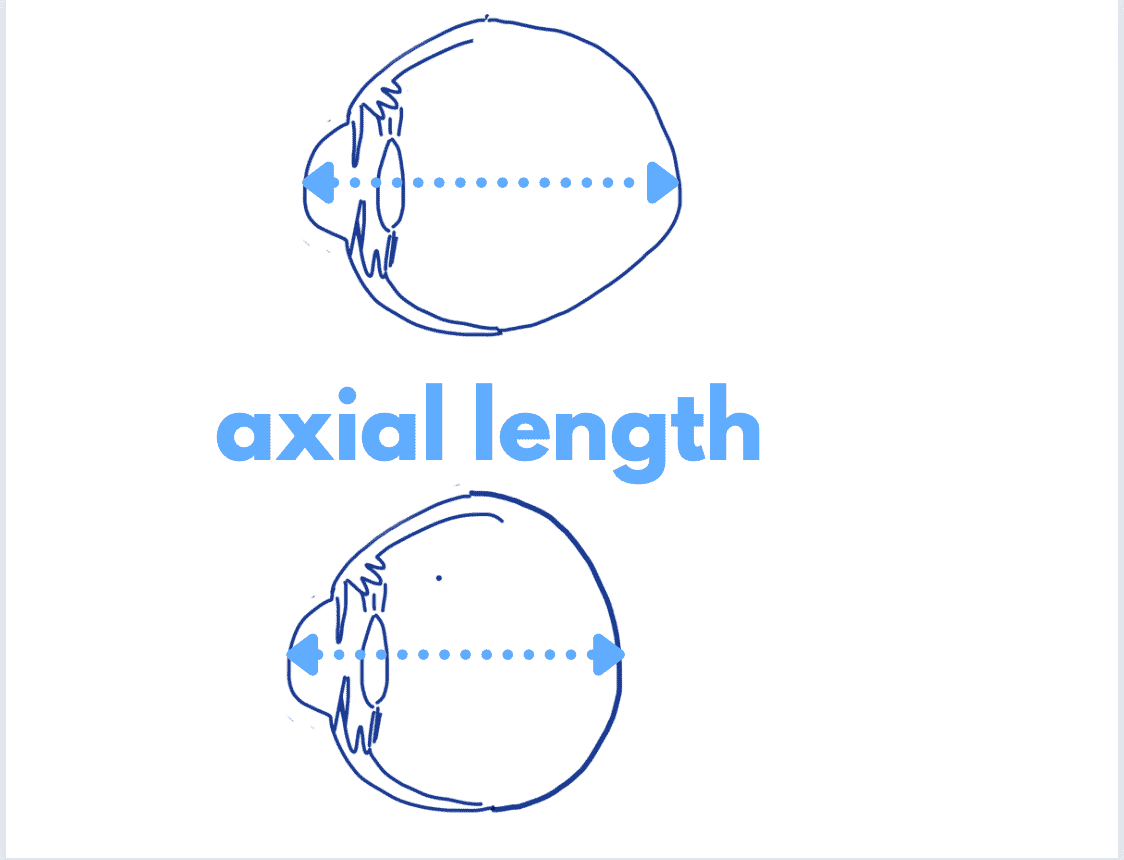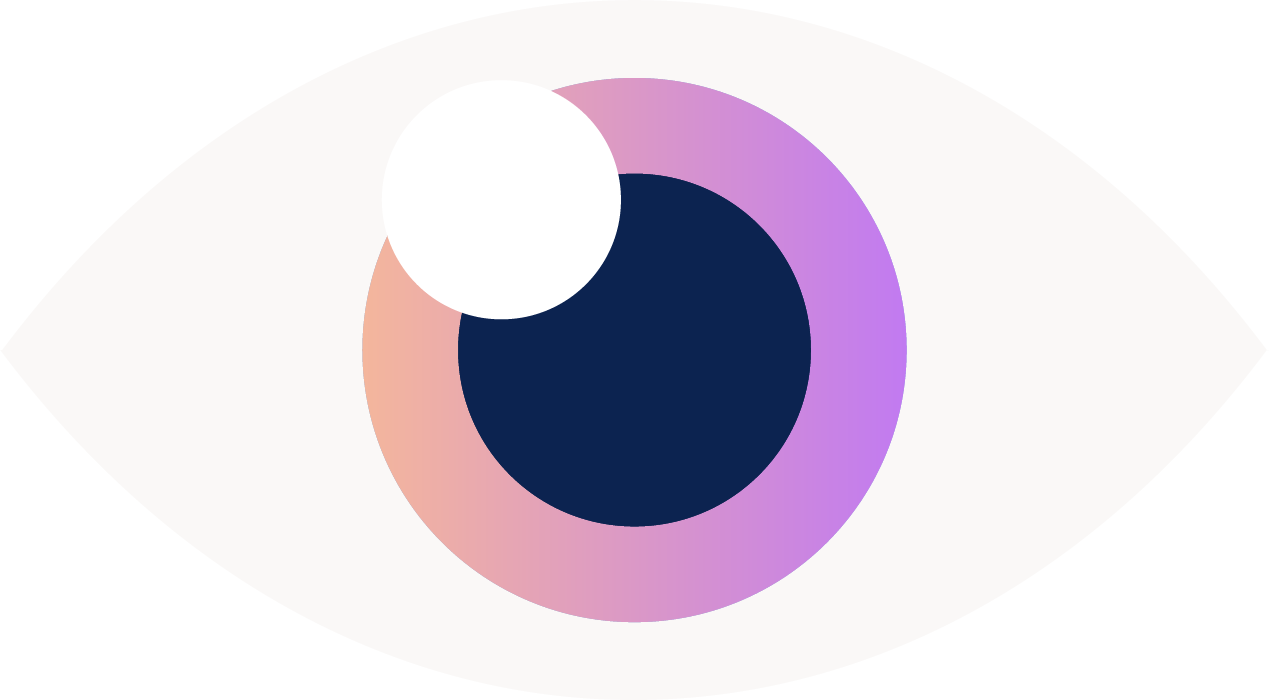What Is Myopia?
Myopia is one of the most common conditions that I diagnose and treat in my practice as a pediatric ophthalmologist. What is myopia?
Myopia, also called nearsightedness is when things in the distance are blurry, but objects up close are clear. Now, of course, this can be affected by how nearsighted an individual is - severe nearsightedness, or high myopia, can cause people to need glasses to even see more than a few inches away from their face. Most common is that kids have a difficulty seeing the smart board at school or adults have trouble reading street signs as they drive. But, those with a high amount of nearsightedness have trouble even reading their phones in the morning without their glasses or contacts.
But, what does it mean to be myopic? It means that your eye is a littler longer than most others who are not nearsighted. It could also mean that your cornea (the clear dome shaped covering of the eye) is more curved as well.

Some parents are not nearsighted themselves, so they struggle to understand what the world will look like for their children. I created this vision simulator here, so parents can understand.
Here's an example of moderate myopia. It's at the degree that you (or your child will likely require glasses to see both near and far).

Click here for the interactive myopia simulator. Image created by Dr. Rupa Wong, not to be reproduced without permission.
Is myopia dangerous?
Another big question I get from parents is concern that myopia is dangerous. And, for the most part it isn't, usually, it simply means that you need to wear glasses (or contacts to see better in the distance). However, if the level of nearsightedness is high enough, then it actually can be vision threatening. And, here's why.
I mentioned previously that people who are nearsighted typically have a longer than normal eye ball. We can actually measure this distance from the front to the back of the eye with certain machines and this measurement is called the axial length. I do this for patients who are in my myopia management programs.

When your eyeball is stretched longer, then, the inner lining of the eye, the retina becomes stretched thin as well. This is more likely if you are highly myopic - anything above a -5.50 Diopter in terms of your glasses prescription. To understand what your glasses prescription means, read this blog post here or the image below.

The average length of an adult eye is 24 mm. I have seen myopic individuals with axial length measurements from 25 mm all the way to 33 mm!

Ocular Complications for Highly Nearsighted Individuals
What having a longer eye means is that an individual is predisposed to developing the following:
- Retinal Tears and Holes (because the retina is stretched more thinly and can develop holes)
- Retinal Detachments (when fluid tracks inside the tears underneath the retina, causing it to separate from the other layers)
- Myopic Maculopathy
- Glaucoma
- Cataracts
Again, these complications typically occur in highly myopic patients and not in people whose prescription is not quite as strong. But this is why it's really important to continue seeing your eye doctor for exams EVEN IF you have had LASIK/PRK etc and no longer consider yourself "nearsighted". Your retina is still nearsighted, which means you're still at risk for developing a retinal tear or detachment even if you no longer wear glasses or contacts.
Treatment Options for myopia
- Glasses
- Contact Lenses
- Refractive Surgery (LASIK, PRK, SMILE)
- Myopia Management for kids (Atropine drops, Contact Lenses)
Surgery for nearsightedness is not FDA approved for anyone younger than 18 years old. Most surgeons would prefer that their patients are 21 years old since the prescription can still change in your early 20's. You need to have stability in your measurement for at least 2 years otherwise your surgeon is chasing a moving target.
Interested in having your eyes checked? Come visit us at Honolulu Eye Clinic!
Part 2 : Risk Factors for Nearsightedness is coming next week!

